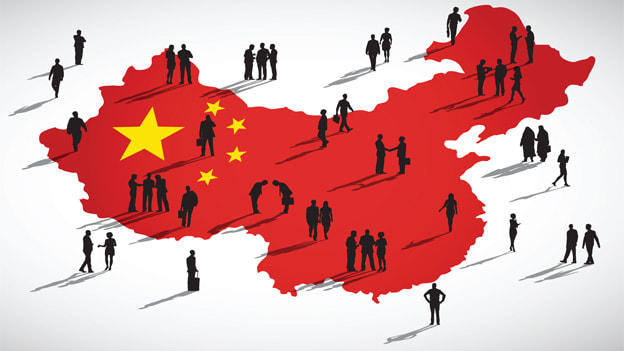How to correct the culture of overwork?

Can you die of working too much? While asking such a morbid question right at the beginning might seem like a build-up to a more nuanced and careful answer, unfortunately, it is not. In many parts of the world, the question isn’t rhetorical and the answer is a serious ‘yes’. In many Asian countries, the problem of death by overwork, either by direct impact or leading to a suicide, is so widespread that they have specific terms in Japan (Karoshi), China (Guo lao si) and South Korea (Gwarosa) for the same.
In Japan, the phenomenon has caused hundreds of death every year the 1970s and has routinely flared up in the public discourse. The latest being a Niigata Pref. education board official who died on the job after 125 hours overtime. More recently in October 2017, labor inspectors ruled that the death of a reporter in 2013 was caused due to working 159 hours overtime and taking just two days off in the month leading to her heart failure; while in December 2015, a 24-year-old ad agency employee jumped to her death owing to intense work pressure. The government’s white paper released in 2016 concluded that nearly 20 percent of the workforce is at a risk of dying and almost half do not take any paid leaves. Almost 12 percent were reportedly working more than 100 hours overtime a month, a figure which was accused of being misleading since most overtime happens off the record. In China, the government’s official figure of people dying from toiling too hard was at a staggering 1600 per day in 2014. Korea regularly witnesses incidents of blue collars employed in postal services, transportation and construction dying of working too much or causing fatal accidents while driving or at their places of work. Health experts have agreed that anything more than 80 hours of overtime per month significantly increases chances of death by overwork.
While the concept of literally dying from overworking isn’t identified as a serious issue in India, it doesn’t mean that the threat, and occasional tragedy, is absent. Workplace stress, financial problems, and relationship woes have been identified as the some of the top causes of suicide in India. In 2016, in separate incidents, top employees at Encyclopedia Britannica and Bank of America Merrill Lynch India succumbed to the massive work pressure. Back in 2014, in a survey conducted by (then) Towers Watson, nearly half the employees in India admitted to being under ‘excessive’ pressure at work. About a third of them attributed the same to ‘overwhelming productivity demands’ from employers.
A study conducted by Chestnut Global Partners India (CGPI) and Society for Human Resource Management (SHRM) pegged major stressors in workplace as Disrespect at the workplace, lack of work-life balance, over time, inability to process constructive feedback from manager, lack of support from manager and when opinion is not considered/participation is stifled. Furthermore, it noted that despite a high organizational productivity loss due to stress, companies have low awareness on the addressing the issue, have difficulty in justifying the RoI and face difficulties in deploying initiatives across geographies.
A Culture of Overworking
A quick look at the history and ideologies of India, South Korea, China and Japan reveals the common connection for such reverence towards work. All these countries have witnessed a combination of struggle, poverty, war and inefficient resource management at some point in the last century. The citizens of these countries value hard work, loyalty and the need to outperform competition more than others – because it equates to the question of survival.
Such factors have fostered a culture that puts precedence on working hard at one’s job, even if at the cost of health, family, relationships or hobbies. Just like how the concept of time is perceived differently in different countries and cultures, what constitutes hard work, and how it must be undertaken, is defined differently as well. In all the mentioned countries, the amount of time one spends working in the office usually determines the chances of the next promotion or raise, and not many tend to gamble with it.
The acceptance of a stressful workplace is deeply engrained in all stakeholders, and there is hardly any protest or attempt to alter the status quo. While there is evidence to show that working longer hours leads to less productivity and efficiency, employees continue to put their health on the line.
Course Correction
There is only so much the law can do to ensure that the workers can actually benefit from it. The real power to change the paradigm lies with organizations and employers, which is a bit of a catch-22 situation. Assuming that there is genuine motivation towards greater work-life balance, how does one change this perception of hard work? How do organizations realize that disconnecting from work is important, beneficial and healthy? Turns out, a lot of interesting and innovative experiments are already underway. Organizations are increasingly taking the holistic health of their employees with utmost importance, and incorporating elements of technology (Fitbit and BP Canada), gamification (EMC), mental health (Delta Hotels), or something as simple as walking (Google).
Such programs are essential for two reasons: one, they cater to unique new-age issues that employees face today; and two, they are more effective than the tick-in-the-box health and wellness policies of the past. As found by the CGPI-SHRM study, most existing wellness programs focus on awareness, and simply provide access to infrastructure geared towards health and wellness, or worse, emphasize on the same sporadically, and offer their employees rigid, unimaginative and formal programs that do not create the desired impact. However, policies that look after the well-being of employees, to keep stress at bay, need to be rooted in the following values to be truly effective:
- Flexible culture: Building a strong, open and accommodative culture that values efficiency, productivity, and innovation over long working hours, without forcing employees to accept the conventional perspective on what entails hard work, is the first step towards a stress-free workforce.
- Supporting employees: Supporting employees not only in their roles, but helping them manage their careers, finances, physical and mental health will evoke a deeper sense of loyalty and satisfaction.
- Communication: Understanding what employees want from their jobs, managers, workplace, colleagues, and teams is critical to design a program to support them. Timely feedback mechanisms and transparency must be the two other indispensable features of the program.
- Tools and Technology: The employer needs to provide enough flexibility in order to allow employees to follow and see through the tasks. This is where wearable and interactive technology, engagement platforms, special office spaces and inculcating healthy habits will be helpful.
Bottom-line: A Long Journey Ahead
Although only instances from selected countries have been mentioned, instances of people losing their health, and worse, life, are likely to be found throughout the world. While it certainly looks like India, South Korea and Taiwan are following into the footsteps of Japan, and will in all likelihood, have a similar pressing challenge on their hands in the future; there is still time to turn the ship around. However, in order to successfully transition from the work-first attitude, there needs to be a willingness to do so. Nonetheless, despite the tragic deaths that have made news in the past few months, signs of a positive change, led by companies, governments, and societies are visible and worth exploring.











